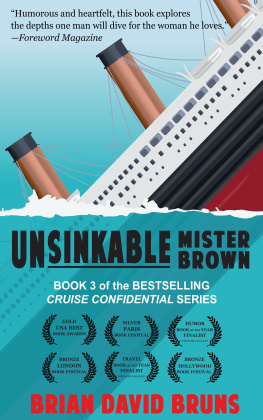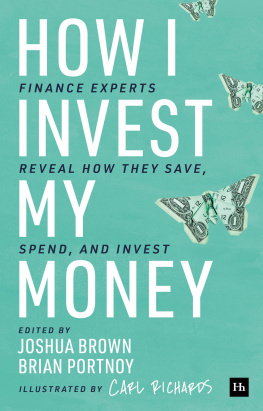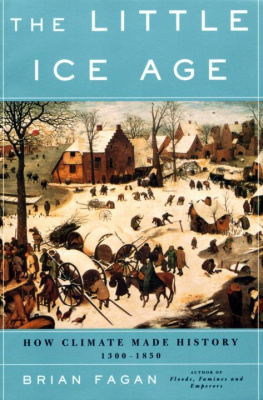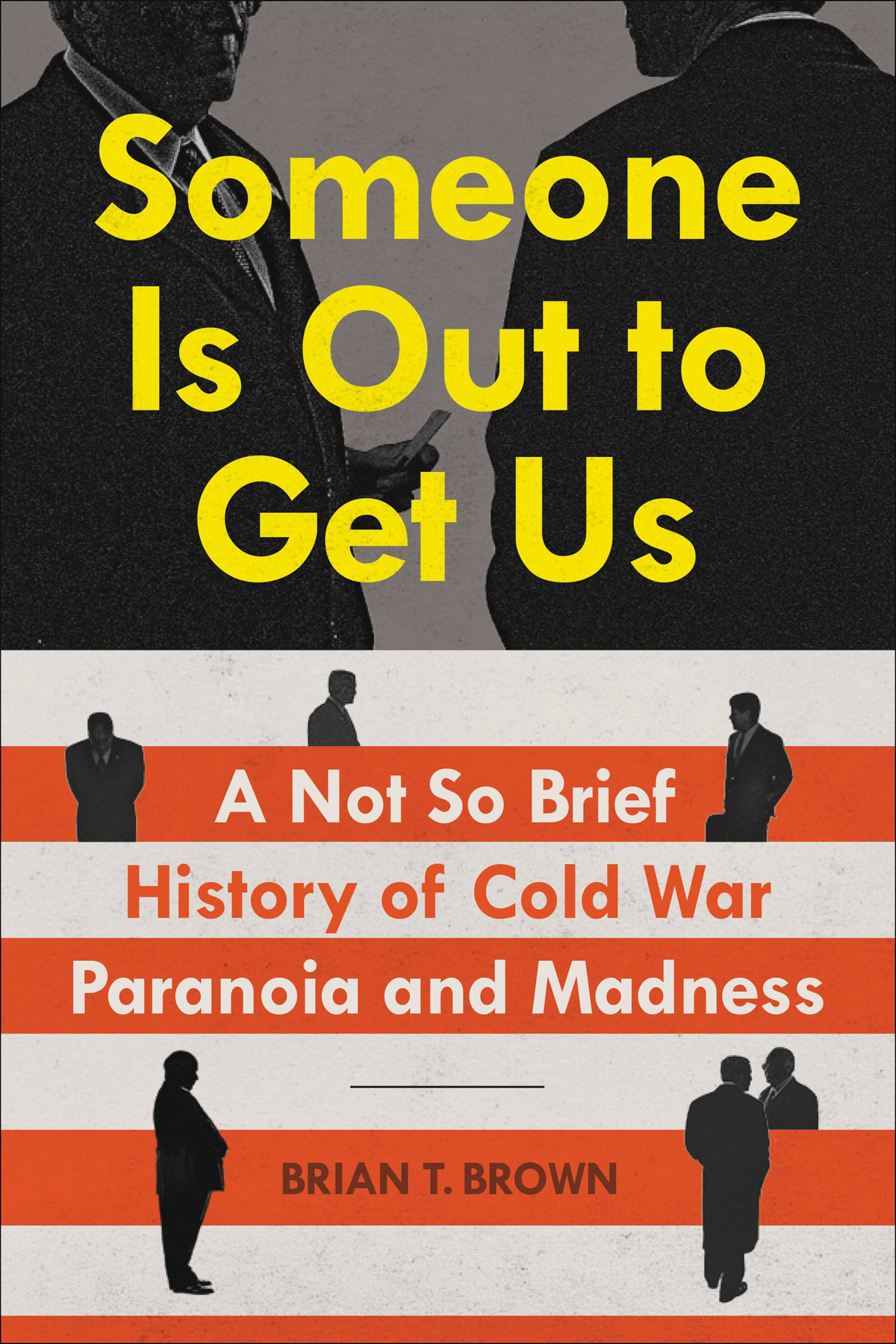Copyright 2019 by Brian T. Brown
Cover design by Jacob Covey. Cover copyright 2019 by Hachette Book Group, Inc.
Hachette Book Group supports the right to free expression and the value of copyright. The purpose of copyright is to encourage writers and artists to produce the creative works that enrich our culture.
The scanning, uploading, and distribution of this book without permission is a theft of the authors intellectual property. If you would like permission to use material from the book (other than for review purposes), please contact permissions@hbgusa.com. Thank you for your support of the authors rights.
Twelve is an imprint of Grand Central Publishing. The Twelve name and logo are trademarks of Hachette Book Group, Inc.
The publisher is not responsible for websites (or their content) that are not owned by the publisher.
The Hachette Speakers Bureau provides a wide range of authors for speaking events. To find out more, go to www.hachettespeakersbureau.com or call (866) 376-6591.
Library of Congress Cataloging-in-Publication Data has been applied for.
When people react out of fear, horrible things can happen.
Mieke Eoyang, Third Way think tank, commenting on a 2018 text alert sent to Hawaiian residents warning, wrongly, of an inbound missile attack. A state employee had pushed the wrong button during a safety drill.
Paranoia: A mental disorder characterized by systematized delusions ascribing hostile intentions to other persons; often linked with a sense of mission.
It is dark. You are alone on a silent street in a dangerous neighborhood. Your senses have been instantly and sharply awakened. You suspect you are being followed. You turn around. No one is there.
If Youre Not Paranoid Youre Crazy
headline in a 2015 Atlantic story that references the National Security Agencys new data center in Utah
Our life is what our thoughts make it.
Marcus Aurelius
There is no fear in love; but perfect love casteth out fear: because fear hath torment. He that feareth is not made perfect in love.
1 John 4:18 (KJV)
In tone and temperature, the current cultural moment clearly bears a resemblance to the Cold Wars undertow of suspicion, deceit, and peril. A killer is back in the Kremlin. Theres a new round of chilling Russian subversion, and FBI counterintelligence experts are back digging to assess the depth of the damage. A cloud of disinformation wont clear. Once again, the Doomsday Clock is heading back toward midnight.
During the Cold War, Soviet defector Yuri Bezmenov confirmed that the KGBthe Committee for State Securitywas trying to make us question the very nature of truth: Most of the work, 85 percent of it, is a slow process which we call ideological subversion, active measures, or psychological warfare. What it basically means is: to change the perception of reality of every American to such an extent that despite the abundance of information no one is able to come to sensible conclusions in the interest of defending themselves, their families, their community, and their country.
During the 2016 U.S. presidential campaign, Russias spy turned autocrat, Vladimir Putin, unleashed the kitchen sink of aktivni meropriyatiyaactive measuresto damage Hillary Clinton, a perceived foe. Soviet military intelligence hacked into sites associated with the Clinton campaign and used a willing front organization, Wikileaks, to launder the stolen goods. The ubiquity and vulnerability of social media, Facebook in particular, was exploited by Russian-directed forgeries. In the Washington Post, a Russian troll explained how it worked: You were in some kind of factory that turned lying, telling untruths, into an industrial assembly line. There were huge numbers of people, 300 to 400, and they were all writing absolute untruths.
In 1964, Lyndon Johnsons most famous campaign commercial showed a young girl picking daisies before cutting to a blooming mushroom cloud. The scene, juxtaposing innocence with annihilation, was a coy warning of the dire threat presented by Johnsons alleged trigger-happy opponent, Barry Goldwater.
In 2016, the Clinton campaign consistently warned voters that candidate Trump couldnt be trusted with the nuclear codes. Theres always been a paranoid fringe in our politics, said Clinton. But its never had the nominee of a major party stoking it, encouraging it, and giving it a national megaphone.
Mr. Trump opened his bid for the presidency by demonizing immigrants, encouraging Islamophobia, and suggesting it was our turn to build a wall. He also expressed nostalgia for the days of Richard Nixons Law and Order. Like Nixon, Trump has protested he is not a crook in spite of almost daily press bulletins indicating otherwise. In these times, we have become more mindful than ever that the tactics of Trump were taught to him by Roy Cohn, who powered Joe McCarthys shameless witch hunts.
Lies have become alternative facts, problematic journalism is now called fake news, conspiracies inform policies, the president has his own state TV, and, going back to the future of 1984, reality has to be seen through the eyes of the Party. Just remember, Trump told a gathering of veterans, what you are seeing and what you are reading is not whats happening.
As many of us continue to obsess over the danger posed by suicidal jihadists, recent annual statistics show death by lightning, shark, or white supremacist as far more likely. The effects of climate change are indeed leading us toward extinction, but many insist that gay marriage, Planned Parenthood, and gun control are greater threats to our national welfare.
Flying saucers, first officially sighted over America during the early days of the Cold War, are also back in the news. The Pentagon recently admitted it was still in the business of evaluating alien visitations. According to the New York Times, the Advanced Aerospace Threat Identification Program was charged with investigating an increasing number of UFO reports from service members. The program spent $22 million of black money secretly authorized by Congress and was run out of an office on the fifth floor of the [Pentagons] C Ring, deep within the buildings maze.
A new documentary, Bob Lazar: Area 51 and Flying Saucers, profiles the man who told the world that captured alien technology was being reverse engineered at a classified base known as S-4 out in the Nevada desert near Area 51. Lazar insists that the U.S. government is concealing the truth about extraterrestrial visitations and suppressing knowledge that has the power to shift the entire world economy.
Your author, born in 1958, experienced three-quarters of the Cold Waras a child left largely unattended on the streets of Queens; as a teenager engaged by the daily news he was dispensing on a paper route in a freshly built suburban development in New Jersey; as a college student at Columbia, where the antiwar ferment of the sixties still had a romantic appeal; and, finally, as a budding journalist working for the











